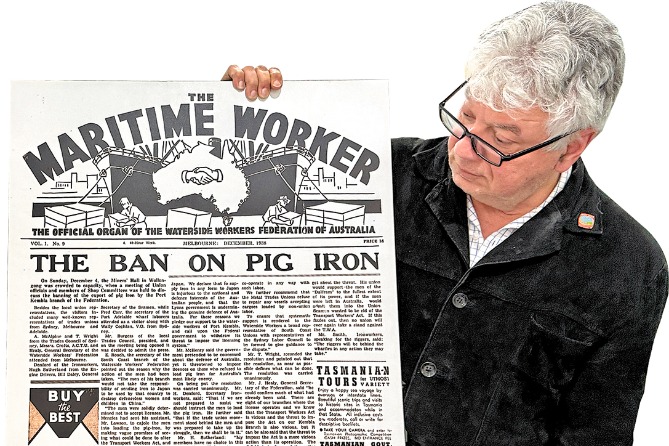Art hub tries to paint a new future

Exodus of artists from Tianzifang, a bustling tourist hotspot in Shanghai, reduces its role as a center for culture
The scene along Taikang Road today is a far cry from what it was two decades ago. Home to the iconic Tianzifang, the area is now filled with numerous retail outlets, small snack shops, bars and cafes, most of which are occupied by tourists from other Chinese cities and abroad.
Located in the heart of Shanghai and well known for its labyrinth of alleys, Tianzifang was built where abandoned factories from the 1940s and historical shikumen "stone gate" residential buildings from the 1920s once stood.
| Factories and old housing estates used to stand where Tianzifang is now located. Yu Ran / China Daily |
| Souvenir shops, bars and cafes outnumber art galleries and studios in Tianzifang. Photos by Yu Ran / China Daily |
Yu Hai, a professor of sociology at Fudan University who has studied the Tianzifang area since its inception nearly 20 years ago, says it is a shame that the true charm of the area has been lost in the modernization process.
This used to be a place where people could savor the essence of old Shanghai, and one that was slated to become a community for people from the creative industries. Today, it is just another tourist attraction, albeit a very famous one, that only has a faint glimpse of its artistic core.
"Tianzifang has over the years faced a struggle to gather artists, designers and creative businessmen. Those who are in the area now are also planning to move out," says Yu, who recently led a team of students from Fudan and Tongji universities to conduct an in-depth survey of Tianzifang.
"This should be a place for people to trace back the old times in Shanghai, not filled with shops and restaurants," he adds.
Zheng Rongfa, the former administrative head of the Dapuqiao area which Taikang Road is under, recalls how Tianzifang used to be a vibrant place filled with the sounds and smells coming from the homes of Shanghainese families.
"There used to be an outdoor wet market where housewives would haggle over the price of live chickens in the morning. Many men would smoke cigarettes and play poker on tables in the courtyard in the afternoon," says Zheng, who is widely regarded as "the father of Tianzifang".
In 1998, Zheng kicked off the project to turn the area into a hub for the cultural industry. He leased out the 10,000-square-meter space occupied by the idle factories on a 20-year contract and moved the street market indoors.
In 1999, Chen Yifei, a world-renowned Chinese painter, and several other artists set up studios in the old factories on Lane 210 along Taikang Road, creating a cluster of more than 200 culture and art venues. This was also the time when Huang Yongyu, another well-known painter, named the area Tianzifang as a tribute to an ancient Chinese painter of the same name.
One year later, the sub-district government leased the remaining spaces to a sole proprietor named Wu Meisheng. Galleries, cafes and boutiques opened alongside old Shanghai homes, imbuing the area with a unique charm.
In 2004, Tianzifang nearly became a victim of the city's relentless modernization. Calls were made for the place to be torn down to make way for high-rise shopping malls.
Fortunately, thanks to the intervention of Zheng and a group of his supporters, Tianzifang emerged unscathed.
According to statistics provided by Yu, 100 million square meters of old buildings in Shanghai were torn down between the early 1990s and 2008 to make way for modern ones. However, the Shanghai government has also been striving to preserve traditional architecture, turning many old estates into zones for creative industries.
Following the threat in 2004, Zheng realized that the residents from neighboring lanes needed to band together to help expand the size of Tianzifang in order to boost the significance of the area.
Renovation works were also planned to give the rustic zone a new lease of life.
"This led to a new shift from the residential to nonresidential use of space in Tianzifang and the local residents were quick to join the effort," says Zheng.
Zhou Xinliang was one of the first residents to lend support. In September 2004, he leased his 33-square-meter room on Lane 210 to a fashion designer.
However, he says he did so only because the 3,500 yuan ($531; 477 euros) he charged for rent would go a long way in helping with his living expenses - he was getting only 300 yuan every month from his pension.
While the interiors of many of the buildings have since been renovated and given a new coat of paint, the old brick facades from which Tianzifang gets its charm, are still very much intact.
The face-lift was a success and Tianzifang buzzed with activity. Middle-aged housewives carrying bags of vegetables would squeeze past expats sipping cappuccino at outdoor cafes.
In 2008, the government took over Tianzifang and shifted the focus from developing the place as an art and culture hub to commercialization, security and property management.
As one of the first shop owners to arrive on Lane 274 in 2007, Yan Hongliang, who sells ceramic art designed and produced in Jingdezhen, Jiangxi province, has witnessed the tremendous changes that have taken place since.
The one that made the most impact is rent.
At the beginning, Yan had to pay only around 6,000 yuan a month for his 60-square-meter shop. He is now paying 40,000 yuan and says the rent will exceed 60,000 yuan after his current contract expires in two years.
"The pressure caused by the booming real estate market has sped up the commercialization of Tianzifang. The place is now filled with more tourism-related items instead of original artworks," says Yan, adding that he plans to move out of Tianzifang after fulfilling his rental contract despite his attachment to the area.
According to sociology professor Yu Hai, there are currently 586 shops in the area. Over the past five years, retail outlets have steadily replaced the art studios and galleries, which now account for just 2 percent of the shops in Tianzifang.
Yu says that the exodus of artists is the biggest problem of Tianzifang right now. Though he says he does not think that this will lead to the demise of the place, he is concerned that it will eventually result in a change of appearance and the loss of its iconic architecture.
"It is time to preserve the nostalgic elements of Tianzifang with the help of government, which should move to control the rising rent, encourage more creative talent to move in, and support further development," he says.
Fabienne Wallenwein, a German doctoral student who is enrolled in a one-year exchange program at Fudan University, shares the same sentiment.
"To me, these traditional residential areas are highly valuable because they help maintain a lifestyle that is unique to Chinese cities, whereas the modern lifestyle of globalized cities can be found in other metropolises around the globe," she says.
In the meantime, Zheng Rongfa, the former administrative head, says he can only hope that the government thinks the same way about the future direction of Tianzifang's development.
"If the authorities can implement restrictions regarding the types of business that can exist in Tianzifang and provide artists with subsidies, this place can once again become a vibrant cultural hub," he says.
yuran@chinadaily.com.cn
(China Daily Africa Weekly 06/10/2016 page21)
Today's Top News
- China reaffirms sovereignty over Taiwan, says complete reunification unstoppable
- A-share market surges past 100 trillion yuan milestone
- No reason for Germany to let political expediency hurt relations with China
- Book on Xi's views on strengthening, revitalizing armed forces published
- China supports Ukraine peace talks between all parties
- China to hold press conference on military parade preparations































